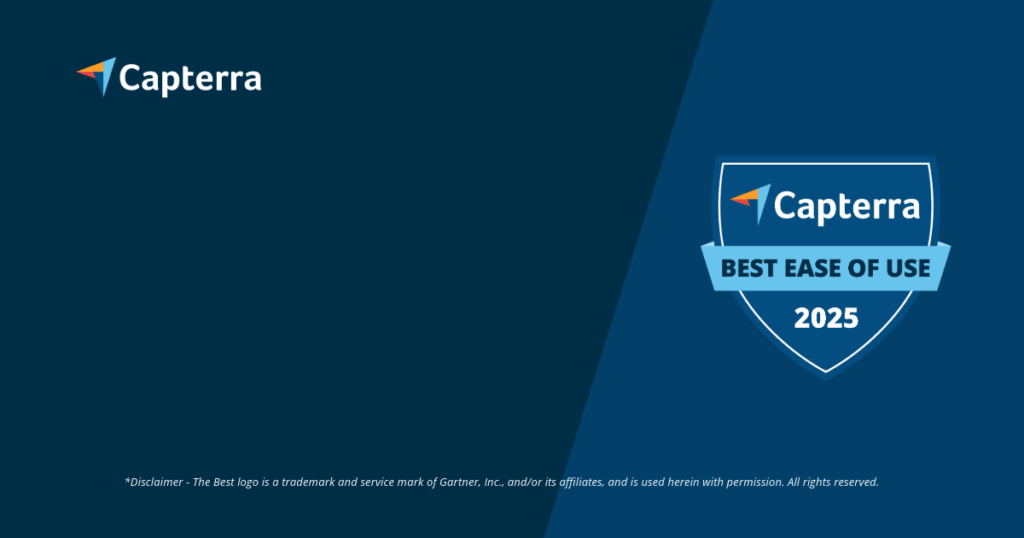Your project plan for software implementation: The A and O for digital success
Let’s be honest, introducing new software is quite an adventure, isn’t it? It’s definitely more than just a few clicks during installation. We’re talking about a process that deeply influences your workflows and presents your team with new, exciting challenges. That’s exactly why a thoughtfully created software implementation project plan is not just a nice idea, but the absolute foundation for your success. Without a clear plan, you risk not only timelines and budgets getting out of control. A missing software implementation project plan could have severe consequences here. Even worse: Team acceptance could suffer, and the whole project could falter. A good software implementation project plan catches these risks and ensures that the implementation goes smoothly and that the new software can fully leverage its strengths. We at Valoon GmbH know this complexity from many projects and happily help you optimize your processes in construction.
- Fundamental process: Software implementation deeply affects workflows and is more than just a technical installation.
- Essential project plan: A carefully crafted plan is the basis for success, not just a formality.
- Risk minimization: It helps to avoid time and budget overruns as well as acceptance issues within the team.
- Potential development: A good plan ensures that the new software can fully utilize its strengths and that the implementation proceeds smoothly.
Think of your software implementation project plan like a detailed map. It navigates everyone involved safely through each stage, clearly shows who is responsible for what, and helps identify potential hurdles early on. This way, communication becomes transparent and the project stays within the agreed timeline and budget. Especially in dynamic industries like construction, where every movement and smooth processes matter, a well-planned software implementation – for example, with our easy project management software – can make a real difference in the competition. Always remember: The time you invest in a solid software implementation project plan will pay off multiple times – through fewer corrections and significantly less frustration. Would you like to dive deeper into how you can successfully introduce your new software? We’re here for you!Here’s how to master the software implementation: The crucial phases for success
A software implementation that truly bears fruit follows a proven pattern. It’s a bit like building a house: Each phase has its own goals and tasks, and only when all gears mesh together does a stable result emerge. A comprehensive software implementation project plan serves as your site manager, keeping everything in view and coordinating the individual steps.
- Project preparation and initialization: Laying the foundation, clearly defining project objectives according to the SMART method, and establishing the project scope and responsibilities. An important starting point for any software implementation project plan.
- Requirements analysis and rough concept: Analyzing existing processes (current state analysis), uncovering weaknesses, and defining the target state involving users, culminates in a detailed requirements specification. This analysis is central to the software implementation project plan.
- Software selection and decision: Researching the market based on the requirements catalog, comparing offerings, testing software (with key users), and selecting the right provider. The results flow directly into the software implementation project plan one.
- Implementation and introduction (rollout): Technically installing and configuring the software, migrating data, training end users, and ideally conducting a pilot phase before going live. The software implementation project plan oversees this complex step.
- Monitoring, analysis, and optimization: After going live, continuously observe performance, user behavior, and data quality, gather feedback, and adjust the software to new requirements. This phase is also part of the lifecycle covered by the software implementation project plan it.
Project preparation and initialization: Laying the foundation
Everything begins with a solid foundation. In this first, crucial phase, we collaboratively create the basis for the entire software implementation project plan.. What do we want to achieve exactly? Here, we rely on clear, SMART method-formulated project objectives. Just as important: defining the scope precisely. Which processes are we tackling? Which departments are on board? Responsibilities must be clear, and all key people – from management to IT to the specialist departments and, of course, the future users – must be involved from the very beginning. A project charter that documents goals, scope, milestones, and budget is invaluable here, as the beautiful illustrates. And very importantly for your software implementation project plan: Where might there still be knowledge gaps? Recognizing these early on and closing them through training or external experts is extremely helpful in preventing resistance later.
Requirements analysis and rough concept: Understanding the need
Once the foundation is laid, we’ll take a close look at your current business processes (the current state analysis). We’re not just documenting the status quo; we want to uncover weaknesses and identify potential improvements together with you. Building on this, we then paint the picture of the target state. This step in your software implementation project plan should consider both the overarching corporate goals (top-down) and the very concrete wishes of your users (bottom-up). At the end of this phase, there is a detailed requirements specification. This is basically the wish list for the new software: What must it be able to do, not necessarily how it does it. Involving end users intensively is a must for us – that’s the only way to create practical requirements that the software implementation project plan must consider, and acceptance will increase later. For specific industries like construction, it’s also exciting to see how our software for construction planning and execution can optimally integrate here.
Software selection and decision: Finding the right partner
With a clear requirements catalog in hand, it’s time to search for the software that truly fits you. Good market research helps separate the wheat from the chaff. Set evaluation criteria in advance to fairly compare offers. Software presentations, workshops, and trial deployments (there are often demo versions available) are great for rigorously testing the software. Solicit offers and take your time with contract negotiations. Don’t just look at the price but also consider support, maintenance, and how future-proof the software is. Key users should definitely be involved in testing – their practical feedback is invaluable. This part of the software implementation project plan may take some time, but believe us, it’s worth it for long-term success.
Implementation and introduction (rollout): Bringing the software to life
Now it’s time to get concrete! In this phase of the software implementation project plan we’re launching the software. This means technical installation and configuration of the systems. A critical point is often the data migration from old systems – precision is required here to ensure that no data is lost or scrambled. At the same time, end users must be trained comprehensively. A pilot phase, where the software is first tested in a smaller area or with a selected group, is highly recommended. This way, last-minute issues can be resolved before it goes live for everyone (go-live). And after going live? Keep your eyes open! Closely monitor the ongoing operation to be able to react immediately to any problems. A cloud-based project management solution in construction can significantly ease coordination here.
Monitoring, analysis, and optimization: Ensuring long-term success
With the go-live, the journey in the software implementation project plan is not over yet. Now it’s about staying on it! We need to continuously keep an eye on the software’s performance, user behavior, and data quality. Regularly gather feedback from your users to see where improvements can be made. Analyze the collected data: Have we achieved our goals? Where might we need to adjust? Software development is a living process. Even after the introduction, the software should be adapted to new requirements and opportunities. This way, you ensure that your investment pays off in the long run and supports your company in the best possible way.Your roadmap to new software: These elements must not be missing
A truly good software implementation project plan is like the stable backbone for your entire implementation. It not only sets the direction but also ensures that we think of everything important that a comprehensive software implementation project plan should include. The following building blocks are, in our view, essential and should have a fixed place in every detailed software implementation project plan .
- Scheduling and milestones: A detailed schedule with realistic goals for each phase and clearly defined milestones for progress monitoring, including buffer times.
- Resource planning: The careful planning of budgets, personnel (availability and time required for training, data migration), hardware, and licenses to avoid bottlenecks.
- Risk management: The early identification, assessment, and development of strategies for potential problems such as technical difficulties, resistance in the team, or data issues.
- Communication plan: Establishing who receives which information, when, and how, to promote transparency, trust, and collaboration throughout the project.
Scheduling and milestones: Keeping an eye on progress
An accurate schedule with realistic goals for each phase and task is crucial. This plan should not only include rough start and end dates but also define smaller work packages. Important milestones must be clearly formulated, so we can regularly check the project progress and, if necessary, steer back on course early. Tools like Gantt charts or our specialized project management software for the construction industry help to visually present everything beautifully and manage dependencies between tasks. A tip from us: also plan in buffer times for the unforeseen – it makes things so much easier! software implementation project plan auch Pufferzeiten für Unvorhergesehenes ein – das entspannt ungemein!
Resource planning: Optimal use of resources
Resource planning is a crucial point in the software implementation project plan. It’s not just about money but also about having the right people at the right time, the required hardware, and perhaps also licenses for testing environments. What is often underestimated is the time needed for training and data migration – please plan realistically here! It is super important that the required employees are actually available. Sometimes it also makes sense to bring in external professionals for specific tasks like tricky data migrations or system integrations. A clean resource plan prevents bottlenecks and ensures that your project team runs smoothly and that the software implementation project plan can be adhered to.
Risk management: Preventing potential problems
Every software project has its pitfalls; that’s completely normal. However, proactive risk management in the software implementation project plan helps us to recognize, assess and have suitable countermeasures ready for them early on. Typical risks? Technical problems, perhaps some resistance within the team, not-so-clean data, or delays from external partners. For each identified risk, we should think of strategies on how to avoid, mitigate, or respond in case of emergencies.Prioritize the risks according to how likely they are to occur and what damage they could cause – this way, we focus on what’s essential. And very importantly: Keep an eye on the risks throughout the entire project and adjust the software implementation project plan accordingly!
Communication plan: Informing all stakeholders
A clear communication plan ensures that throughout the entire software implementation project plan everyone knows what’s going on – transparently and regularly. Define who receives which information when and how.. These can be regular project meetings, reports to management, information for affected employees, or interaction with the software provider. Open and honest communication about progress, but also about challenges and problems, greatly strengthens trust and collaboration. This is especially important for promoting the acceptance of the new software and clearing up misunderstandings from the outset.Big Bang or step by step? The right strategy for your software implementation
When it comes to implementing new software, you often face an important fork in the road: go all at once with the so-called Big Bang approach or prefer a step-by-step iterative method? Both paths have their own unique advantages and disadvantages, which we should carefully weigh together. software implementation project plan Because the best method depends on many factors – from the size of your company to the complexity of the software to your risk tolerance. A good software implementation project plan will prepare this decision thoroughly.
Big Bang: Jumping into the deep end
With the Big Bang approach, the name says it all: there is a cut-off date, and the entire company suddenly switches to the new software.All users switch over at the same time. The charm of it? It can potentially be faster, and the direct costs are often lower because you don’t have to run two systems in parallel for long. Furthermore, you immediately have a unified data base throughout the company. . But beware, the disadvantages can be significant: the risk of something going wrong is much higher because if one thing goes wrong, the entire system is affected. This must be regarded by the. Aber Vorsicht, die Nachteile können es in sich haben: Das Risiko, dass etwas schiefgeht, ist deutlich höher, denn wenn es hakt, ist gleich das ganze System betroffen. Dies muss der software implementation project plan as a high risk. Acceptance issues within the team may also be greater due to the sudden change. And a completely error-free, comprehensive data migration in advance is a must here. A
is essential in this method if things go awry.
Iterative implementation: step by step to the goal The iterative method, also known as phased implementation, takes a gentler approach: thesoftware is introduced gradually in clearly defined sections or modules. This can happen department by department or function by function. The big advantage here is thesignificantly better acceptance within the team. software implementation project plan Your employees can gradually get used to the new system, and training can be designed more specifically. The risk is smaller because any problems that arise can be limited to smaller areas, allowing us to identify and fix them early. Additionally, we have the chance to make adjustments and optimizations during the process. The downside: The entire implementation can take longer, and due to the longer parallel operation of the old and new systems and the additional coordination effort involved, it may also become somewhat more expensive. A detailed software implementation project plan must take these aspects into account.
The choice of the right method for your software implementation project plan
The decision between Big Bang and iterative implementation is truly a strategic fork in the road in your software implementation project plan. There is no one-size-fits-all solution here; no method is inherently better or worse. Keep the following points in mind when making your decision:
- Company size and structure: In smaller companies with manageable processes, a Big Bang is often easier to handle than in large, complex organizations. This significantly influences the software implementation project plan decision.
- Complexity of the software and processes: The more intricate the software and the processes to be mapped are, the more likely we would advise an iterative approach.
- Risk tolerance: If you prefer to play it safe, the iterative method is usually the more relaxed choice.
- User acceptance and change management: A step-by-step approach makes change management and digitalization in construction often easier because employees are gradually brought along. An important point for the oft einfacher, weil die Mitarbeiter peu à peu mitgenommen werden. Ein wichtiger Punkt für den software implementation project plan.
- Existing resources: What does it look like in terms of personnel and finances? A Big Bang ties up many resources in a short time.
- Data migration: The complexity and scope of data transfer can be the deciding factor here. A gradual migration is often less prone to errors.
If you carefully analyze these factors within your software implementation project plan you will find the strategy that best suits your company and thus lay the groundwork for a successful implementation. At Valoon, we like simple solutions that can flexibly adapt to your needs. We are happy to advise you on choosing the right implementation method for our easy project management software..New software, new opportunities: How to excite your team!
Implementing new software often turns beloved work processes upside down. Therefore, smart change management is absolutely crucial for success in your software implementation project plan. It’s about gently breaking down potential resistance, actively involving your team, and sparking positive curiosity about the new solution. Because let’s be honest: without your employees’ acceptance, even the coolest software can’t really shine, regardless of how good the software implementation project plan is.
Communication and transparency: The be-all and end-all
Being open, honest, and always on the ball – that’s the foundation for effective change management. Inform your employees as early as possible and comprehensively about why the new software is being implemented, what goals are associated with it, what benefits it brings (even for each individual!), and how the process is supposed to unfold. Explain how the new software will facilitate their daily work and, welche Ziele damit verbunden sind, welche Vorteile sie bringt (auch für jeden Einzelnen!) und wie der ganze Prozess ablaufen soll. Erklären Sie, wie die neue Software den Arbeitsalltag erleichtern und optimize processes. Create transparency about the project progress, provide regular updates, and openly address potential challenges. A great resource is the, which also addresses employee communication. By involving your employees in decisions, for example through feedback rounds or by allowing them to participate in testing phases, they will feel much more connected to the project – an important cornerstone for every Schaffen Sie Transparenz über den Projektfortschritt, geben Sie regelmäßige Updates und sprechen Sie auch mögliche Herausforderungen offen an. Eine super Hilfestellung bietet hier die , die auch auf die Mitarbeiterkommunikation eingeht. Wenn Sie Ihre Mitarbeiter in Entscheidungen einbinden, zum Beispiel durch Feedbackrunden oder indem sie an Testphasen teilnehmen, fühlen sie sich dem Projekt viel verbundener – ein wichtiger Baustein für jeden software implementation project plan and successful implementation.
Training and support: Instilling confidence in usage
Too little or the wrong training – this is one of the main reasons for frustration and rejection with new software. Therefore, plan sufficient time and resources in your software implementation project planfor truly good training measures. Training should be as practical as possible and align with your employees’ actual workflows. Show not only how to use the software but, above all, what benefits it brings to daily life. Besides the initial trainings, it is also super important to continue offering support after go-live. Designate clear points of contact for questions and problems and create clear manuals, FAQs, or possibly even small video tutorials. This should be part of your software implementation project plan . Our easy project management software. is designed to keep training efforts minimal, but a good onboarding process is worth its weight in gold.
Key users and multipliers: Ambassadors of change
An effective method in change management is to identify and specifically promote so-called key users. These are employees from various departments who may already be a bit tech-savvy, find the new software exciting, and are eager to take on a pioneering role. You should involve these key users early in the software implementation project plan,train them intensively, and educate them as real multipliers. They can then serve as the first point of contact for their colleagues, help with problems, and share their positive experiences with the new software. Their enthusiasm is often contagious and can help alleviate reservations within the team. It is also important to officially give these key users time for their additional tasks as part of the software implementation.Data migration without headaches: How to ensure quality and integrity
Ah, data migration – a topic that often raises eyebrows in a software implementation project plan It is indeed one of the trickiest and most important steps. It’s about securely transferring your valuable data from the old systems to the new software without losing information or compromising data integrity. A super careful planning and execution is essential here to ensure a smooth transition and for your new system to work with clean data from the start, as any good software implementation project plan should design.
Planning data migration: Laying the foundation
Every successful data migration starts with detailed planning. Take the time to closely examine your current data stocks:Where is the data located? In which formats? What data do we really need in the new system and must be migrated? It’s not always sensible or necessary to carry over every old data record. Define clearly which data should be migrated and weave a detailed migration plan from that. This plan should include timelines, responsibilities, the tools needed, and testing procedures. In your software implementation project plan also think about whether legacy systems may need to run in parallel for a while or remain accessible for archiving purposes. A detailed software implementation project plan will not neglect this aspect. By the way: if the new software comes with appropriate interfaces, this can significantly simplify the data migration, as also mentioned in the research input.
Data cleansing and standardization: Ensuring quality
Data migration is a one-time chance to clean up your data! Often, legacy systems harbor duplicate, erroneous, or inconsistent data – the so-called ‘data garbage.’ Therefore, thorough data cleansing before the actual migration is a must.Find and correct errors, remove duplicates, and merge data from various sources. At the same time, the data formats should be adapted and standardized to the requirements of the new system. This step in the software implementation project plan may take some time,but it is crucial for the future performance and reliability of your new software. Clean and consistent data are the foundation for meaningful analytics and efficient processes – exactly what our effective construction management software needs to shine.
Execution and verification of data migration: Precision is key
When it comes to the actual data migration, it should happen as automated as possible to avoid careless errors. There are special ETL (Extract, Transform, Load) tools or scripts for this. Very important: Before the final migration, be sure to conduct several test runs with a portion of the data.This allows you to thoroughly test the process and identify potential problems early on. After each migration phase and especially after the complete migration, a meticulous verification of data integrity and completeness in the new system is absolutely necessary. Conduct spot checks, verify critical data fields, and perform functional tests with the migrated data. Document the entire migration process and all decisions made during it securely in your. Machen Sie Stichproben, prüfen Sie kritische Datenfelder und führen Sie Funktionstests mit den migrierten Daten durch. Dokumentieren Sie den gesamten Migrationsprozess und alle Entscheidungen, die Sie dabei getroffen haben, sorgfältig in Ihrem software implementation project plan. A good construction coordination software thrives on high-quality master data – we cannot emphasize this enough, and the software implementation project plan must ensure this!After go-live comes optimization: Measure success and stay on it
Done! The new software is live – a reason to celebrate! But wait, the work within your software implementation project plan is not quite over yet. A successful implementation is not a finished project but the starting signal for a continuous improvement process. To ensure that your investment pays off in the long term and that the software always meets your needs optimally, systematic success measurement and a willingness to constantly learn and optimize are crucial. This way, you can also clearly demonstrate the Return on Investment (ROI) that was aimed for through the software implementation project plan pursued.
Definition of Key Performance Indicators (KPIs): Making success measurable
To be able to objectively assess the success of your software implementation, we need to establish clear and measurable metrics, the so-called KPIs, beforehand. These KPIs should be directly linked to the original goals we defined in the software implementation project plan . What could relevant KPIs be? For example, an increase in productivity through faster processing times, fewer errors, better collaboration between departments, or higher customer satisfaction. Cost savings, such as more efficient use of resources or reduced maintenance efforts, are also good candidates. It is important that your KPIs are SMART: Specific, Measurable, Attractive (Achievable), Relevant, and Time-bound. Choosing the right KPIs is key to making the real added value of the software visible to your company, a goal that everyone software implementation project plan should pursue.
Continuous monitoring and analysis: Recognizing potentials
Once the KPIs are defined, the phase after the implementation of your software implementation project plan is about regularly monitoring and analyzing them. Systematically collect data on the established metrics and compare it with the baseline values or your target specifications. If there are discrepancies, try to understand the causes. Use these insights to identify strengths and weaknesses in the use of the new software. This data-driven analysis not only helps document success but also to uncover possibly untapped potentials and find areas where we can further optimize. Continuous observation of how your users interact with the system and how it is utilized can also provide valuable insights – a point that is also emphasized in the research input for continuous monitoring and optimization.
Feedback and optimization: Closing the loop
In addition to the hard facts from KPI analysis, qualitative feedback from your users is an incredibly important gauge of success and a driving force for improvements. Establish regular feedback loops, to capture the experiences, wishes, and criticisms of your users. This can happen through surveys, workshops, or simply in direct conversation. Take this feedback seriously and use it to continually optimize the software and the associated processes. Plan for resources for adjustments and further developments in the software implementation project plan. The willingness to respond to user feedback and to gradually improve the software is crucial for high long-term acceptance and the maximum benefit of your software investment, which underscores the success of your software implementation project plan . Our construction project management software is constantly being developed based on customer feedback – because that’s the only way it gets better!
Key benefits of software implementation
What are the concrete benefits for you when you implement a well-thought-out software implementation project plan ? Here are some of the most important advantages at a glance:
- Efficiency booster: By automating routine tasks and optimizing workflows, your employees have more time for what really matters. The result: a significant increase in efficiency.
- Top data quality and availability: A centralized data management and standardized processes mean fewer errors, no annoying redundancies, and everyone has access to up-to-date, accurate information at all times.
- More transparency, better decisions: Modern software solutions often come with powerful analytics and reporting tools. This gives you a better overview of your business processes and helps you make decisions based on solid data.
Typical stumbling blocks during software implementation – and how to navigate them elegantly
Even with the best planning, unexpected hurdles can arise when implementing new software – unfortunately, that’s part of it. But a good software implementation project plan anticipates such potential stumbling blocks in advance and considers measures to avoid them or at least mitigate their impact. When we know the common pitfalls, we can take proactive action to ensure implementation success. A robust software implementation project plan is worth its weight in gold here.
Unclear goals and requirements: The compass is missing
One of the most common reasons software projects get derailed are vaguely formulated goals and unclear requirements. If it’s not crystal clear what we want to achieve with the new software and what features it needs to have, choosing and implementing will become difficult. The solution? A crystal-clear requirements analysis (your specification document) and precise goal definitions (keyword SMART goals) right from the start of the software implementation project plan. Include all key people, especially your end users, in this process. This way, we create a mutual understanding that is essential for the software implementation project plan . The also emphasizes how important goal definition is.
Lack of resource planning: The project built on sand
Another classic: The required time and personnel effort as well as the budget are underestimated. If resources are lacking or people are overloaded, it can shake the entire software implementation project plan. The solution is a realistic and comprehensive resource planning, which takes all aspects into account – from software selection, data migration, and training to support after go-live. Distribute clear responsibilities and ensure that your project members have enough leeway for their tasks. And our tip: Plan buffers for the unexpected! A solid resource planning is a cornerstone for the successful implementation of new software.
Insufficient training and support: Leaving users out in the rain
Even the most user-friendly software requires some onboarding. If employees are not properly trained or have no contacts after implementation, it quickly leads to frustration, mistakes, and rejection – and we certainly want to avoid that! The solution is a well-thought-out training concept that is tailored to the needs of the various user groups, and of course continuous support from key users or a hotline. Plan sufficient time for training in the software implementation project plan and create understandable instructions and support materials. Our easy project management software. is designed for intuitive operation, but even here, a good introduction is crucial.
Neglecting change management: Ignoring the human factor
Implementing new software is always a change process. And changes can trigger fears and resistances, that’s human. If change management is neglected in the software implementation project plan, the project can fail due to a lack of employee acceptance. The solution is a proactive change management that engages your employees early on, communicates transparently, and clearly shows the benefits of the new solution. Foster an open feedback culture and take your employees’ concerns seriously. Involving key users as positive ambassadors can work wonders here.
Faulty data migration: Starting with legacy issues
Migrating data from legacy systems is a real source of errors. A sloppy or incomplete data migration can slow down the new software right from the start and lead to incorrect results. The solution lies in a meticulously careful planning and execution of the data migration – including data cleansing and thorough testing. Clearly define which data should be transferred and at what quality. Allow sufficient time for test migrations and validations before going live to avoid nasty surprises. software implementation project plan genug Zeit für Testmigrationen und Validierungen ein, damit es beim Go-Live keine bösen Überraschungen gibt.
And here are a few more typical pitfalls we should avoid:
- Wrong timing of the implementation: Try to avoid scheduling implementations during the busiest time of the year.
- Lack of communication: Ensure a consistent flow of information to all who are affected.
- Instability of the provider: Check beforehand how reliable and future-proof the software manufacturer is.
Your way to success: Mastering software implementation with the right project plan
If there is one thing we take away from our experience, it is this: A truly well-thought-out and comprehensive software implementation project plan is the focal point for successfully implementing new software solutions. From the first idea and preparation through the detailed analysis of your requirements, to the selection of the software that actually fits your needs, the implementation itself, and ongoing monitoring and optimization – each phase requires clear structures and definitive responsibilities, as defined by the software implementation project plan . Important aspects such as change management, data migration, and risk management must not be forgotten, nor should open communication and the involvement of all stakeholders. A well-structured software implementation project plan is your shield against unnecessary risks and costs while laying the foundation for sustainably better processes and more efficiency in your company.
The time and energy you invest in a detailed software implementation project plan will pay off more than in the end. It ensures that your new software can reach its full potential and is not only accepted but also gladly and effectively used by your employees. Companies that approach this process strategically and with foresight can secure real competitive advantages. Just think of more efficient processes, improved data quality, faster decisions, and more satisfied employees – these are just some of the positive effects that a solid software implementation project plan enables. The digital transformation, especially in sectors like construction through the digitalization in construction, is in full swing, and the ability to adapt flexibly with modern software solutions is becoming increasingly important. At Valoon GmbH, we specialize in supporting companies like yours on this path and reducing the complexity of software implementation for you. easy project management software auf diesem Weg zu unterstützen und die Komplexität der Softwareeinführung für Sie zu reduzieren.
A successful software implementation project plan is so much more than just a piece of paper; it is a living tool that guides your company safely through the transition. Use the approaches and methods we have presented here to make your next software implementation a resounding success. And if you need support – whether in creating your individual project plan or in selecting and implementing the right software solution for your specific requirements – we are here for you. Simply contact us today for a personalized consultation. Visit our contact page and take the first step towards a software implementation that truly moves you forward!
Why is a detailed project plan so important for software implementation in the construction industry?
In the construction industry, where projects are complex and many trades need to be coordinated it is essential. It ensures that the new software – which is often intended to optimize the communication between the construction site and the office – software implementation project plan is integrated smoothly, schedules are adhered to and budget overruns are avoided. und Without a plan, chaos and acceptance issues threaten. What key phases should our project plan for software implementation definitely include?
Welche Kernphasen sollte unser Projektplan für die Softwareeinführung unbedingt enthalten?
A solid software implementation project plan typically includes: 1. Project Preparation & Initialization (Goals, Scope), 2. Requirements Analysis (AS-IS/TO-BE), 3. Software Selection, 4. Implementation & Rollout (Installation, Data Migration, Training) and 5. Monitoring & Optimization. Each phase is crucial for success.
How does Valoon GmbH specifically help simplify the software implementation for our field employees?
Valoon focuses on maximum simplicity and user-friendliness. Through the seamless integration of popular messaging services like WhatsApp , your field employees can use familiar tools. This significantly reduces training efforts and automatically transforms unstructured communication into actionable project data.
Big Bang or iterative rollout – which is better for a construction company with many decentralized teams?
For construction companies with decentralized teams, the iterative, i.e., step-by-step rollout, is often more advantageous. It allows for a better adaptation, reduces risk , and promotes acceptance. A Big Bang can be faster but carries higher risks, especially when teams need to be familiarized with new technology.
How do we ensure that our employees accept and effectively use the new software?
The key lies in early communication, comprehensive training, and active change management. Involve your employees, especially key users, from the very beginning in the software implementation project plan process. Clearly highlight the benefits and provide continuous support.








